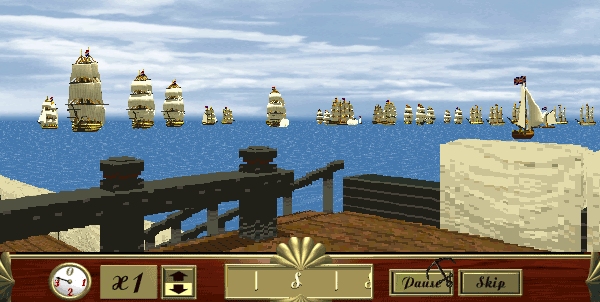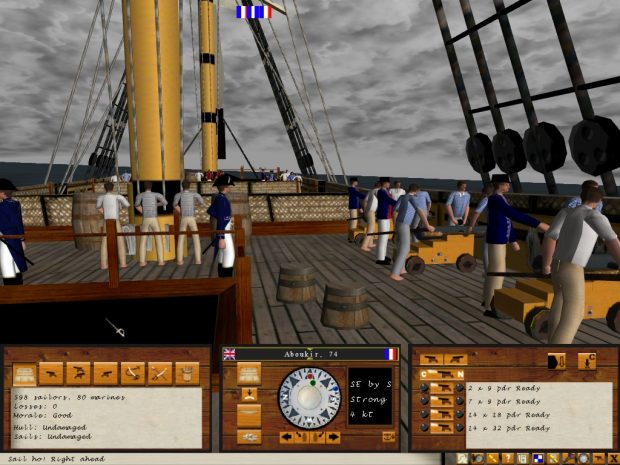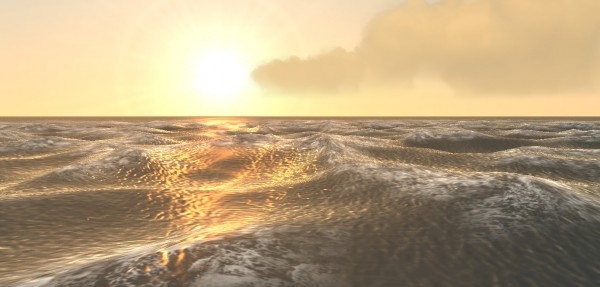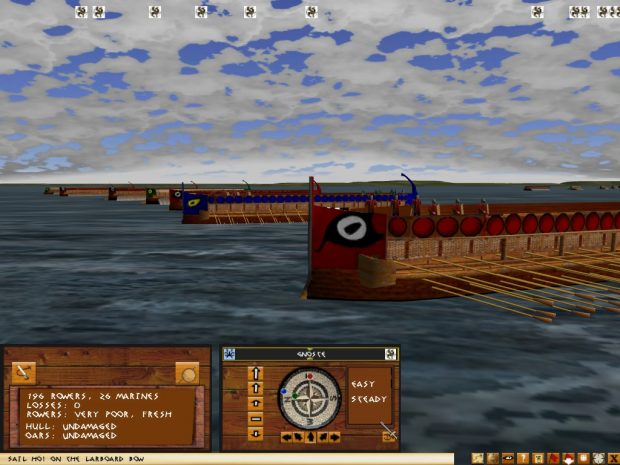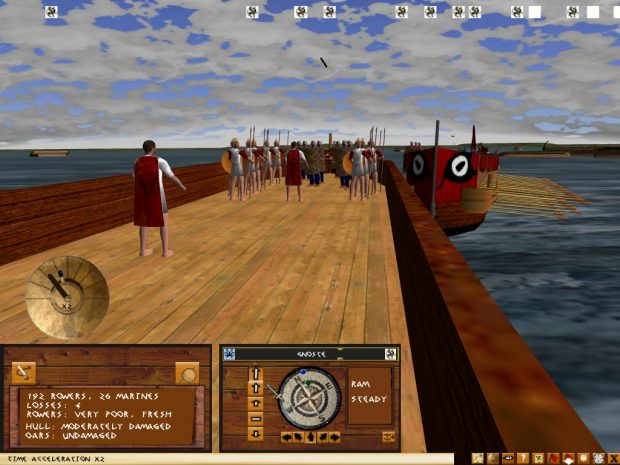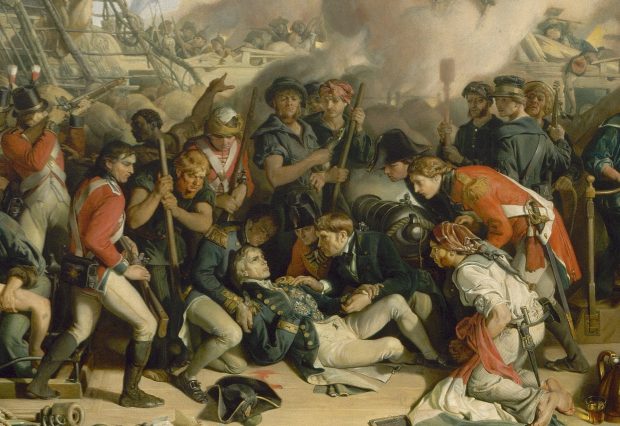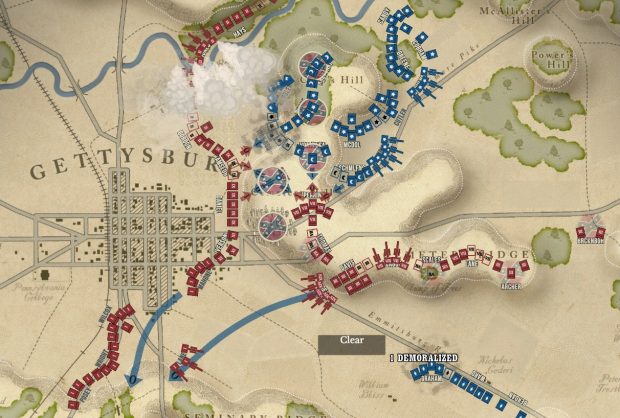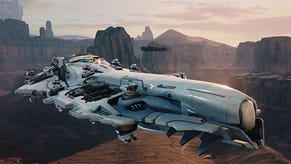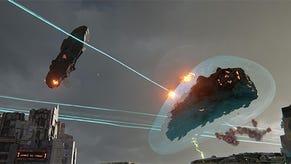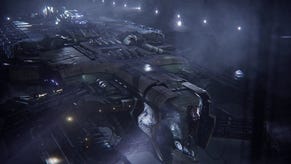The Flare Path: Tidal Energy
Meet Richard Taylor
When Penny, Flare Path's globetrotting PBY pilot, spots an amateur coder quietly crafting a computer wargame or sim on some remote desert island, she always executes a few low passes in order to check out the project in question. When she spots an amateur coder quietly crafting three titles simultaneously she simply has to alight and talk to the industrious individual concerned.
In today's column, Penny's Q&A with Richard Taylor, a man whose trio of “hopelessly amateurish” (his words not mine) naval games teem with exciting ideas. Oh, and some half-formed thoughts on Gettysburg: The Tide Turns.
Ship of the Line (previously Heart of Oak), Trireme, and Dreadnought have been in production for a decade. Written in Java and utilizing the JME engine they all stem from Richard's desire to play immersive, historically accurate, first-person naval wargames blessed with plausible AIs and meaningful command chains.
RPS: Does your interest in naval warfare go back a long way?
Richard: I suppose it goes back to enjoying Hornblower books in my youth, then (much later) discovering Patrick O'Brien's Aubrey/Maturin series. I always wanted to recreate the types of battles described in the books, at first using miniatures, then on the PC.
I tried various PC games as they came along - Man of War, Age of Sail, Wooden Ships and Iron Men, Man of War 2 - and was disappointed to a lesser or greater degree by them all. It then occurred to me that I might be able to do better myself, which is what I've been trying to do ever since.
My interest in ancient naval warfare is more to do with my interest in ancient history generally (I'm an ancient historian by training and inclination though not, unfortunately, by profession). For Dreadnought, 19th/20th Century naval warfare just seemed like an obvious place to take the game, plus I've always thought battleships are very beautiful things - especially when seen bow-on - so in this particular case it's as much an aesthetic as a historical interest!
RPS: Ship of the Line and its siblings don't look like the work of a beginner. Do you code for a living?
Richard: I do, yes. I currently work as a web developer, so different, but related. I got into software development relatively late in life - I don't live and breathe this stuff, and I'm not really interested in the process of coding itself - it's the output that interests me. I'm definitely a beginner at graphics, design etc, at which I have no real skills at all.
RPS: The JME engine is new to me. Why did you choose it?
Richard: Ship of the Line started life as a Javascript game, run in a browser, which I wrote largely as a way to teach myself Javascript (which I needed for work). So in this form the game was sort of 'fake 3D', using scaled sprites to give an impression of first person perspective. At the same time I was playing around with (non-combat) sailing sims on the PC - Virtual Skipper and Virtual Sailor - and this tied in with my decision to have a go at writing a naval combat sim myself, so I decided to convert to Java, which would run faster and be more open to expansion than a browser game. Once I'd launched into doing that I realised I might as well go true 3D, and I chanced upon JME (which at that point was on version 1) while looking at the options. So a second conversion in quick succession saw Heart of Oak become a JME game.
Quite a bit has happened since then. JME moved on to version 2, then was completely relaunched as version 3, but I haven't attempted to keep up - my rationale for this was that constantly changing software would get in the way of getting the game completed, which is ironic considering that was many years ago and the game still isn't complete! But JME 1 was simple to use, had decent tutorials and forums, did what I wanted it to do, and once I'd committed the time to learning how to use it, I preferred to spend time designing games rather than (re)learning a graphics engine.
RPS: Can your engine handle really large scraps like Trafalgar?
Richard: Yes, this was one of my primary aims. Trafalgar (around 30-40 ships a side) runs a little slowly on my PC, but then my PC is very elderly - more modern hardware should have no problems. I have been up to about 50 ships a side without too much trouble, unless ships crowd into a close melee, but there are options to reduce graphics complexity (such as not showing crews on non-player ships). One of the problems I encountered in extending Ship of the Line back into the 17th Century is that fleets of that era were much larger - 100 ships a side was not uncommon.
In Trireme this is even more of an issue - there were supposedly about 1300 ships at Salamis. I have just played a cut down version with 60 Greek ships against 100 Persians which ran fine - but scaling that up by a factor of ten might be more problematic! One thing I have discovered is that sailing a fleet of 1000 ships in the straits of Salamis seems totally impractical (it's a squeeze with 100), so it may be that lower numbers are closer to the truth anyway. For Dreadnought, there are fewer capital ships but potentially large numbers of destroyers - but then the ranges are much greater, so this should matter far less than in Trireme.
RPS: How sophisticated is the ballistics modelling in SotL? Can cannonballs bring down masts or fail to penetrate hulls at long range?
Richard: I don't attempt to model ballistics as such at all - gunnery uses a number of rules of thumb to achieve what seem to be reasonable results, rather than being physics or ballistics based in a 'bottom up' approach. I take total weight of shot of the guns firing, modify for range (of the particular guns), modify again for hull thickness (so yes, a 4lb ball might not damage a First Rate hull), more modifications for ammunition type (shot, chain, grape, double shot) and crew skill (better crews shoot more accurately), and calculate a total damage score. This is deducted from the hull and/or sail values (depending on aiming) of the target. Then, depending on total damage scored, there is a chance of critical hits - which can include bringing down a mast, disabling the rudder, dismounting one or more guns, starting a fire, and so forth.
RPS: Is the weather gage a significant factor in engagements?
Richard: The sailing model in Ship of the Line is simplified, but realistic enough (I hope) to impose accurate limitations on handling ships and fleets. So a square rigged ship can't sail closer than about 60 degrees to the wind, meaning that one fleet downwind of another will have to beat laboriously to windward to close the range. So yes, the weather gage matters - how much of an advantage or disadvantage it is is another matter - depending on the tactical situation, it may or may not be a particular problem being downwind - it's been interesting to play around with the implications of this in the game. The AI may at any rate attempt to manoeuvre for the weather gage before engaging. Also depending on ship type and wind strength, the lower gun ports of a ship heeling to the wind may be unable to fire, which is another factor to consider.
RPS Which era has proved the most challenging AI-wise?
Richard: This would have to be Trireme - ramming turns out to be a very tricky business, and there are all sorts of fleet formations to worry about too. For SotL, at its most basic, all the AI needs to do is sail toward a target until in range, then turn broadside on and blast away (the AI will try other things too, but that as a minimum will provide a workable game). For Trireme, ships could just head for the nearest enemy ship and run into it, but that's colliding rather than ramming, and once ships get mixed up in a melee, having them avoid collisions with friends, wrecks, and larger or facing enemies, while taking opportunities for real ram attacks, is very hard. But I've always taken a pragmatic approach to this - the AI is very limited really but it has only to provide an impression of plausible behaviour in order to do the job, not plan with chess-like precision. The player on deck has such a limited view of what is going on anyway that it is easier to get away with a simple AI.
RPS: Does a first-person perspective mean no external ship views whatsoever and a slim chance careers will be cut-short by snipers or grapeshot?
Richard: I do have an external camera though I personally would discourage using it - fog of war and the limited perspective are the whole point of the game, and I feel that using an external camera is akin to cheating. But it's there if people want it. I also have a masthead camera which I have no objection to using.
One of the game settings is to make the player captain vulnerable or invulnerable - with vulnerability turned on, yes, every broadside, or musketry if in range, carries a chance of the battle ending with player captain death. I wasn't sure about this as a feature - if playing Trafalgar, say, it might be annoying if 30 minutes in the battle ends with the player killed (ask Nelson), and I toyed with the option of switching ships. But it's simpler to just have it as an option - it adds danger in career mode, which is good.
RPS: Will defeat in a campaign mission inevitably mean a reload or a restart?
Richard: Absolutely not - that is one of my pet hates. Campaign mode is really career mode, a series of randomly generated missions (actions) involving the player in the same ship (but with varying friendly forces). Defeat might mean reduced promotion prospects and lower admiralty approval, and having to fill up losses with landsmen rather than seamen, but otherwise just move on to the next action (unless the player character is killed, see above). After all, if playing as a junior captain in a fleet action, you might not have much control over victory or defeat anyway - that will be up to the AI admiral.
RPS: Would you consider a commercial release if a publisher showed an interest?
Richard: Sure. Some years ago, before the hiatus in development, I had a preliminary conversation with a publisher but didn't take it any further. There are several issues outstanding with the games and I'd need to polish them a fair amount, but if any publisher is interested, I'm up for it.
RPS: How did your recent dalliance with WWI air warfare go? (Earlier this year Richard swapped frigates for Fokkers for a while)
Richard: Well it's not Wings over Flanders Fields by any means but I'm happy with it. I just wanted to see if the game could support movement in three dimensions, and to create a really simple pick up and play dogfight generator, which would let me fire up a dogfight without having to find a CD or step through a load of setup screens, and zoom around for a few minutes without having to remember which keys to press to start the engine. I also wanted a simple career/squadron mode of linked missions (like in the naval games), and at least a feel for the different handling of different aircraft. I haven't the skills or patience to do it properly, but as a playable game I'm quite pleased. In particular, the AI (which is extremely simple) manages to appear aggressive and dangerous.
RPS: Thank you for your time.
* * *
Battle of the Bulge has scarred me. When, last Friday, my first two games of Gettysburg: The Tide Turns ended in exasperating freezes, I uninstalled expecting the worst. After waiting an eternity for Shenandoah to fix their troubled Wacht am Rhein title, I really wasn't expecting to be back enjoying GTTT in under a week. Yet here I am, pulping the Peach Orchard and squatting on Spangler's Knob with a big smile on my face!
I've only explored one of the six scenarios as yet, but almost everything I've seen thus far agrees with me.
Attractive, clear, and evocative, the zoomable map is a bona fide masterpiece. In combination with the grid-ignoring movement animations and the sinuous automatic battle lines (neighbouring units automatically form curving lines facing the nearest threat) the quality cartography works hard to camouflage the game's hexy superstructure rather than emphasise it.
GTTT doesn't feel like a conventional hex wargame and I like that. Its rule deviser – the veteran board game designer Eric Lee Smith - uses a simple but ingenious chit pull system to activate units piecemeal and semi-randomly. The stultifying metronome rhythm of conventional IGO-UGO strategy games is avoided, and we are spared long, laborious order sessions.
There's no getting lost in an over-elaborate turn structure either. Like the combat mechanics, formation selection (implied) and target selection (automated for all units except artillery) the minimal phasing keeps the tempo high and the focus firmly on troop positioning. As clashes squirm believably, battle lines reshaping and realigning as units arrive, shatter, or automatically fall back, you peer at the restless geometry and ponder. Should I ask that 'raw' brigade to fill that corpse-strewn gap, or shorten my line and use them later in a less demanding situation? Should I pull back from Seminary Ridge now the Rebs are threatening to cut the Emmitsburg Road, or try to reinforce it with what's left of the Iron Brigade?
Troop quality and terrain are both reassuringly important. Hills and woods block artillery fire; what they don't do at present, strangely, is hide manoeuvring units. There's talk of adding a Fog of War mechanism via a patch at some point. Until that happens, this is, in effect, the Battle of Gettysburg with Austers and Storches. Which doesn't bother me nearly as much as I thought it would.
Early impressions of the AI? Basically positive. While I suspect my latest failure (Union, 'The First Day') had as much to do with optimistic victory conditions as AI ingenuity, GTTT's artificial opponents seem to understand the basic tenets of ACW-era warfare and flex when situations demand flexibility. I'll know more by next Friday.
* * *



